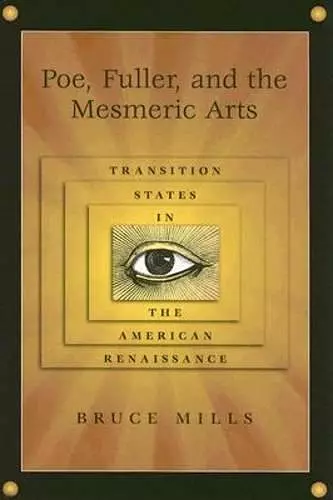Poe, Fuller, and the Mesmeric Arts
Transition States in the American Renaissance
Format:Hardback
Publisher:University of Missouri Press
Published:3rd Jan '06
Currently unavailable, and unfortunately no date known when it will be back

In ""Poe, Fuller, and the Mesmeric Arts"", Bruce Mills examines how the literary understandings of Edgar Allan Poe and Margaret Fuller directly and indirectly draw from representations of animal magnetism, somnambulism, or hypnosis rendered in newspaper accounts, literary and medical journals, pamphlets, and books. Although some recent studies have begun to consider the relevance of animal magnetism or mesmerism to nineteenth-century literature and culture, this book moves more deeply into what might be termed the canon of mesmeric study. Through the works of Poe and Fuller, Mills argues, we can more fully understand the era's response to dynamic cultural forces. Rather than simply using ""American"" subject matter as demanded in early calls for a national literature, Poe and Fuller, as well as Ralph Waldo Emerson, Lydia Maria Child, and Walt Whitman, increasingly sought to develop an epistemology and literary forms, rooted in new psychological findings, that accommodated the fluidity of democratic realities and principles. For those in the literary profession, then, the call for a national literature had evolved into attention to the state of one's own mind, to those manifestations of the highest states of mind, and to the effects of literary choices on readers' psychological states. If the act of creation embodied a ceaseless activity and ever-changing material world, then it demanded an equally dynamic artistic vision. How does one create an aesthetic that effectively explores, accommodates, and fosters the harmonious interplay of transition states?
ISBN: 9780826216106
Dimensions: unknown
Weight: 502g
232 pages